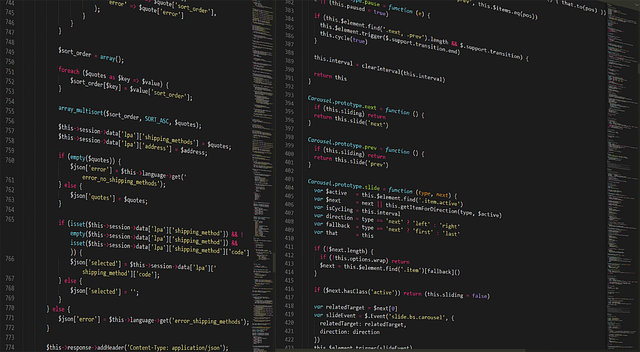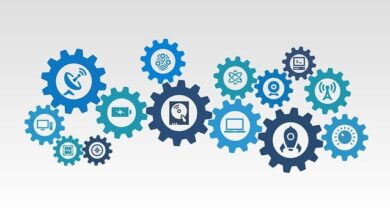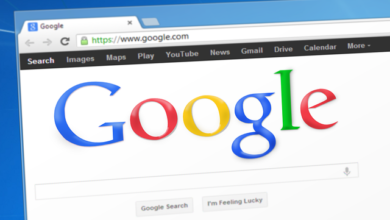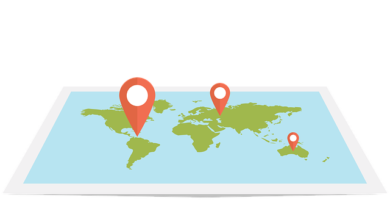Digital Twins in Healthcare: Personalized Disease Modeling

Imagine having an exact virtual replica of yourself, capable of predicting your health conditions and providing personalized treatment options. That’s the power of digital twins in healthcare, specifically in the realm of personalized disease modeling. In this article, we’ll explore how digital twins are revolutionizing the way we approach healthcare, enabling tailored interventions for individuals.
But what exactly are digital twins? In simple terms, they are virtual representations of real-world entities or systems. In healthcare, digital twins mimic human physiology, capturing intricate details about an individual’s genetic makeup, lifestyle choices, and environmental factors. By integrating data from various sources such as electronic health records, wearable devices, and genetic profiles, digital twins create a comprehensive model that reflects an individual’s unique health profile.
One of the key benefits of digital twins in healthcare is their ability to predict and prevent diseases. By leveraging advanced algorithms and machine learning, these virtual replicas can simulate different scenarios and analyze possible outcomes. For instance, if you’re at risk of developing diabetes due to hereditary factors, a digital twin can simulate the impact of lifestyle changes, medication adherence, and dietary modifications on your health. This information empowers healthcare providers to devise personalized preventive strategies and interventions.
Furthermore, digital twins enable healthcare professionals to optimize treatment plans. Each person responds differently to treatments, and what works for one may not be effective for another. With digital twins, healthcare providers can simulate the effects of various treatments on an individual’s virtual counterpart, allowing them to identify the most suitable course of action. This level of personalization improves treatment outcomes and enhances patient satisfaction.
Digital twins also facilitate remote patient monitoring and care. Imagine having a digital companion that continuously monitors your vital signs, detects anomalies, and alerts healthcare providers when intervention is required. This technology empowers individuals to manage chronic conditions from the comfort of their homes while ensuring timely medical attention when needed. It reduces the burden on healthcare systems and improves access to care, particularly for those in remote areas.
Digital twins have emerged as a game-changer in healthcare, offering personalized disease modeling that revolutionizes the way we approach medical interventions. By harnessing the power of data and advanced technologies, these virtual replicas enable predictive analytics, treatment optimization, and remote patient monitoring. As we delve further into the world of digital twins, we can expect even more remarkable advancements in healthcare, empowering individuals to take control of their well-being like never before.
Revolutionizing Healthcare: How Digital Twins Are Personalizing Disease Modeling
In the ever-evolving landscape of healthcare, a groundbreaking technology has emerged, revolutionizing disease modeling and personalizing patient care. Enter digital twins, a cutting-edge approach that combines the power of data, artificial intelligence, and personalized medicine to transform the way we understand and treat diseases. Imagine having an exact virtual replica of your body, enabling doctors to predict how diseases will progress and tailor treatments specifically for you. That’s the potential of digital twins.
So, what exactly are digital twins? Think of them as virtual doppelgängers of real patients. By utilizing advanced computer algorithms, digital twins simulate an individual’s physiology, capturing every nuance and detail. This comprehensive model takes into account various factors like genetics, lifestyle, environmental influences, and medical history, creating a holistic representation of a person’s health status. It’s like having a crystal ball that can predict your health journey.
One of the most significant benefits of digital twins lies in their ability to personalize disease modeling. Instead of relying on generalized data and statistical averages, doctors now have access to precise information specific to each patient. For instance, if you’re diagnosed with a chronic condition, such as diabetes or heart disease, a digital twin can simulate how the disease may progress over time based on your unique characteristics. This invaluable insight helps healthcare providers make informed decisions about treatment strategies, interventions, and preventive measures.
Moreover, digital twins empower patients themselves. By visualizing their virtual counterpart, individuals gain a deeper understanding of their own health and can actively participate in their care. With this knowledge, they can make lifestyle changes, adhere to treatment plans, and take proactive steps to prevent future complications. It’s like having a personal health coach guiding you towards optimal well-being.
The integration of AI further enhances the capabilities of digital twins. Machine learning algorithms continually analyze vast amounts of data, spotting patterns, and identifying potential risks. This enables early detection of diseases, allowing for timely interventions and improved outcomes. With digital twins, healthcare becomes proactive rather than reactive, emphasizing prevention rather than cure.
Digital twins are at the forefront of revolutionizing healthcare. Their ability to personalize disease modeling and provide tailored treatments opens up a new era of precision medicine. By harnessing the power of data, artificial intelligence, and patient-specific information, these virtual replicas empower both doctors and patients to make informed decisions, predict disease progression, and actively manage health. The future of healthcare is here, and digital twins are leading the way towards a healthier and more personalized approach to medicine.
Unlocking the Future of Medicine: The Power of Digital Twins in Healthcare
Have you ever wondered about the future of medicine? The advancements in technology have paved the way for innovative solutions that revolutionize healthcare. One such breakthrough is the emergence of digital twins, which hold immense potential in transforming the landscape of patient care. In this article, we will delve into the fascinating world of digital twins and how they are unlocking new possibilities in the field of medicine.
So, what exactly are digital twins? Imagine having a virtual replica of yourself, capturing every intricate detail of your physiology and medical history. That’s precisely what a digital twin does. It is a real-time, computerized model that mimics an individual’s physiological characteristics, combining data from various sources such as genetic information, medical records, and even wearable devices. This comprehensive representation enables healthcare professionals to gain valuable insights and make informed decisions tailored to each patient’s unique needs.
Digital twins offer a myriad of benefits in healthcare. From disease prevention to personalized treatments, the applications are vast. For instance, imagine a scenario where doctors can accurately predict the progression of a disease by analyzing a patient’s digital twin. By simulating different treatment options, physicians can identify the most effective course of action, saving time and improving patient outcomes.
Furthermore, digital twins have the potential to revolutionize medical research. By analyzing data from multiple digital twins, researchers can gain a deeper understanding of diseases, develop targeted therapies, and accelerate the drug discovery process. This collaborative approach fosters a new era of precision medicine, where treatments are tailored to the individual rather than following a one-size-fits-all approach.

The power of digital twins extends beyond the realm of individual patient care. They can also be employed to optimize healthcare systems and streamline operations. By creating digital twins of hospitals or entire healthcare networks, administrators can identify bottlenecks, improve efficiency, and enhance resource allocation. This data-driven approach ensures that patients receive timely and quality care while optimizing the utilization of healthcare resources.

Digital twins are unlocking the future of medicine by providing a comprehensive and personalized approach to healthcare. From their potential in disease prevention and treatment optimization to their impact on medical research and system optimization, digital twins hold immense promise for transforming the healthcare landscape. As technology continues to evolve, we can expect digital twins to play an increasingly vital role in delivering patient-centric care and improving health outcomes. The future is here, and it looks incredibly promising with the power of digital twins in healthcare.
Virtual Mirrors of Health: How Digital Twins are Transforming Disease Modeling
Imagine having a digital replica of yourself that can provide valuable insights into your health and guide medical professionals in diagnosing and treating diseases more effectively. This futuristic concept is becoming a reality with the advent of digital twins. In this article, we will explore how digital twins are revolutionizing disease modeling and their potential to transform healthcare.

So, what exactly is a digital twin? Think of it as a virtual mirror that reflects your body and its functions in real-time. It is a dynamic computational model that combines data from various sources such as genetic information, physiological measurements, and lifestyle factors to create a personalized representation of an individual. This virtual replica can simulate how your body would respond to different treatments, environmental changes, or disease progression.
Digital twins offer unprecedented opportunities for disease modeling. By analyzing vast amounts of data specific to an individual, they can help predict the likelihood of developing certain diseases, identify early warning signs, and even simulate the effects of potential interventions. For instance, imagine a digital twin accurately predicting the risk of cardiovascular disease based on your genetics, lifestyle choices, and daily activity patterns. Such insights can empower you to make informed decisions about your health and take proactive measures to prevent future complications.
Furthermore, digital twins enable healthcare professionals to test different treatment strategies virtually before implementing them in the real world. This not only saves time and resources but also minimizes the potential risks associated with trial and error. Doctors can simulate the impact of medications, therapies, or surgical procedures on a patient’s virtual twin, allowing them to optimize treatment plans and personalize healthcare delivery.
The impact of digital twins goes beyond individual health. These virtual replicas can be aggregated to create population-level models, providing valuable insights into disease prevalence, transmission patterns, and the effectiveness of public health interventions. By harnessing the power of big data and advanced analytics, researchers can uncover hidden trends, discover novel risk factors, and design targeted interventions to combat diseases on a larger scale.
Digital twins are ushering in a new era of disease modeling and personalized healthcare. By creating virtual mirrors of ourselves, we can gain deeper insights into our health, improve diagnostics, optimize treatment plans, and enhance public health strategies. As this technology continues to advance, we can expect digital twins to play an increasingly vital role in transforming the way we understand, prevent, and treat diseases. The future of healthcare is indeed virtual, and it holds immense potential to revolutionize our well-being.
Predictive Precision: Harnessing Digital Twins for Personalized Healthcare

In the ever-evolving landscape of healthcare, advancements in technology continue to reshape the way we approach patient care. One such innovation that holds immense promise is the concept of digital twins. Imagine having a virtual replica of an individual’s unique physiology, allowing healthcare providers to gather real-time data and make personalized predictions for diagnosis, treatment, and prevention. This groundbreaking technology is taking personalized healthcare to new heights.

But what exactly are digital twins, and how are they revolutionizing the healthcare industry? Digital twins are computer models that simulate an individual’s biological characteristics, encompassing everything from genetic makeup to lifestyle factors. By leveraging a wealth of data obtained through wearable devices, electronic health records, and other sources, these virtual replicas can mirror an individual’s physiology with remarkable accuracy.
The beauty of digital twins lies in their ability to provide predictive insights. By continuously analyzing data in real-time, healthcare professionals can anticipate potential health issues, tailor treatment plans, and even prevent diseases before they manifest physically. This proactive approach to healthcare has the potential to transform the lives of millions, as early detection and personalized interventions become the norm.
Consider the analogy of a weather forecast. Just as meteorologists use sophisticated models to predict future weather patterns, digital twins utilize complex algorithms to forecast an individual’s health trajectory. By factoring in genetic predispositions, environmental influences, and lifestyle choices, these virtual models can offer a comprehensive understanding of an individual’s well-being.
Moreover, digital twins allow for precise monitoring of ongoing treatments. Instead of relying solely on periodic check-ups, healthcare providers can access real-time data from the digital twin, enabling them to fine-tune medication dosages, adjust treatment protocols, and ensure optimal outcomes. This level of personalized healthcare holds the potential to minimize adverse effects and maximize therapeutic benefits.
Personalized healthcare powered by digital twins opens up a world of possibilities for patients and medical professionals alike. Not only does it enhance early detection and prevention, but it also fosters a deeper understanding of individual health patterns. With the ability to simulate different scenarios, healthcare providers can assess the effectiveness of potential interventions, saving time, resources, and ultimately improving patient outcomes.
Digital twins are transforming the landscape of personalized healthcare. By harnessing the power of predictive analytics, these virtual replicas offer unparalleled insights into an individual’s health journey. From early detection to tailored treatments, the era of digital twins holds immense promise for improving patient care and revolutionizing the way we approach healthcare in the future.




